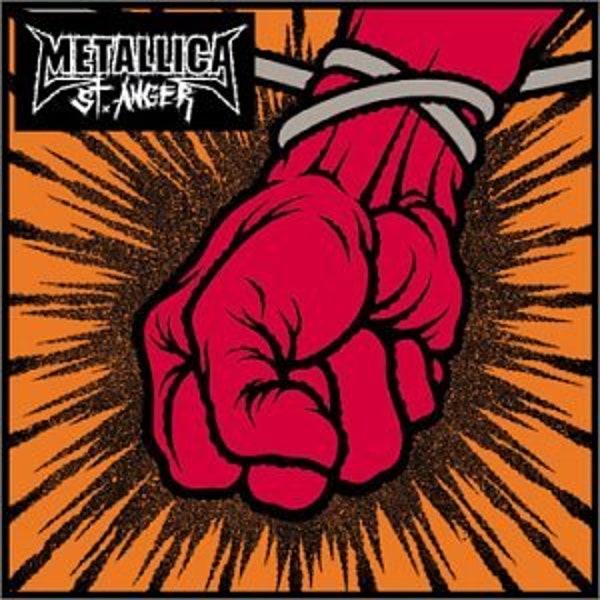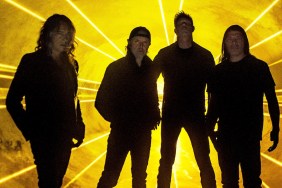Every great band has one. A record that splits a once unified fanbase into two or more directions, creating a word cloud of conflicting opinions that typically leave the band as torn and confused as their fanbase. Whether it is the result of a wild change in artistic direction, a perceived lack of progression, a controversial change of lineup, a production choice, an unpopular collaboration, or any number of factors within or outside of the artist’s control, it all amounts to the same thing; a divisive record.
How an artist responds to this has been the make or break point of many careers, many artists push forward and reach new heights, surviving long enough to see their divisive record become heralded in retrospect. Other artists backpedal into more familiar sounds and hope that the audience will accept them back, to varying levels of success. Other artists don’t survive long enough to find out. Whatever the fallout for the artist, the records remain, untouched, in all of their perceived imperfection.
‘In Defence Of’, a new editorial series by Music Feeds, gives these divisive albums a second chance at making a good first impression. Join us as we give some of music’s most infamous divisive albums a fighting chance, by revisiting and reappraising them, far, far away from the hot takes and cultural context of their creation.
In Defence Of…
Album: St. Anger
Artist: Metallica
Released: 5 June, 2003
Setting the Scene
Putting it mildly, the early 2000’s were a challenging time to be in Metallica. Despite being indisputably the biggest metal band on this or any other planet, Metallica found themselves musically and attitudinally out-of-step with alternative culture. With the downtuned percussive stomp of nu-metal dominating the metal end of the musical spectrum, James Hetfield suffering from alcoholism, bassist Jason Newsted freshly departed and Lars Ulrich on the receiving end of one of of the early internet era’s most infamous hate campaigns thanks to his involvement in THAT Napster file-sharing case, the remaining three horsemen of Metallica faced an uncertain and potentially bleak future. They also faced the pressure of needing to write a new record to satisfy the demand of millions of fans, who had been kept waiting since 1997’s Reload. Add to this the omnipresence of a camera crew who had been tasked with documenting any new album’s creation and the bizarre introduction of ‘performance coach/group therapist’ Phil Towle into the mix, who the band hired to sort through 20 years of repressed anger and unresolved relationship issues, and you had a band on the brink of either collapse or brilliance.
The fact that all of this was happening to a heritage level band that in retrospect could have confidently sold out a stadium every night for the rest of their lives without ever recording another note makes this period of Metallica and St. Anger, the album that it produced, all the more fascinating.
St. Anger
Released into the world 5 June, 2003, St.Anger proved to be the biggest outlier in Metallica’s legendary catalogue. Gone were the signature melodic leads and Kirk Hammett’s instantly hummable solos, replaced by a more percussive, barbaric style, powered by de-tuned riffs hammered out by Hetfield’s machine-like rhythm hand. Gone too, seemingly, was the ‘snare strainer’ on Lars Ulrich’s snare, resulting in a drum sound quite unlike any other heard at the time. Add to this producer/ bassist Bob Rock’s brutalist production work and the fact that St.Anger is the first Metallica record to feature writing credits for every member on every track, (a choice that was itself the product of the unusual circumstances in which it was recorded) and St.Anger is the sound of Metallica completely reinventing themselves.
A purposefully ear-bleeding 74-minute listening experience focused on one dominant emotional spectrum: anger.
Reception
Assessing the reception of St.Anger is a difficult task. On the one hand, it was, at least initially, a staggering commercial success, debuting at #1 in 14 countries, selling over 6 million albums, with the title track ‘St. Anger’, winning the band the Grammy for ‘Best Metal Performance’. The problem is, the vast majority of those sales proved to be to very unhappy customers. Put simply, St. Anger is one of the most divisive albums ever recorded.
Panned by a swarm of fans and critics alike for a seemingly endless array of criticisms, St.Anger has become so synonymous with failure, that those sales figures aside, it is hard to see its reception as anything other than dismal. It has become a punching bag for an entire genre, a joke at the expense of perhaps the singularly most successful and influential metal band of all-time, and the primary example of what not to do, when you find your band at odds with the sounds around you.
In Defence Of St. Anger
Revisiting St.Anger in 2020, 17 years removed from ‘accidentally on purpose’ throwing my CD copy out of my Mum’s car window, and vowing never to listen to it again, was an interesting experience to say the least. Live performances of ‘Frantic’ and ‘St.Anger’ aside, you could probably count the number of times I’ve listened to most of the songs on this album on one hand, and even then, most of those came in the context of viewings of Some Kind of Monster. Suffice it to say, I came to this article fully expecting to give St. Anger an almighty verbal bashing, dismissing it as indefensible and condemning it to burn in hell with all the other broken records as I ran rather ‘frantically’ back to my beloved And Justice For All… for comfort. BUT then a funny thing happened, I actually LISTENED to the record, with an open mind and open ears, and you know what? It isn’t that bad! In fact, at times, it is actually rather GOOD! So here we go, one man, setting up residence on the loneliest of islands and planting my flag in the sand in defence of St. Anger.
Few things in life are more comforting to the ears of a metalhead than the sound of James Hetfield letting rip on a riff. Which is exactly what he does on frenetic opener ‘Frantic’. As far as introductions to the ‘nu’ Metallica go, Hetfield and Hammett locking in on the duelling drop-C riffs that power this rager, is a pretty great place to start. As Lars goes full Lars, the stage is set for a menacing new musical mode for Metallica. When a raw sounding Hetfield starts shouting the songs refrain “my lifestyle, determines my deathstyle”, it genuinely sounds like Metallica approaching the verge of a bold new era, then THAT “tick, tock, tick, tock, frantic” bit happens and you get the first inkling that maybe, just maybe, workshopping the lyrics as a group, might not have been the best approach. Clunky lines and an overzealous runtime aside, ‘Frantic’ is actually well executed and that bizarre “tick, tock, tick tock” part, becomes undeniably fun after a few listens.
The title track follows, and its first 57 seconds serve as the perfect example of what St.Anger could have been. Another drop-C riff fest, Hetfield delivers a bit of a ‘nu’ metal masterclass here, as he and the band shift through three distinctly different yet seamlessly interwoven passages, blending tech, trad and nu-Metallica styles together. It kind of sounds like Slipknot covering ‘Master of Puppets’, which as far as the musical landscape of the early 2000’s goes, is a badass place to be. The sudden drop off into the clean vocal parts sounds needlessly messy, but the awkwardness of that verse is promptly rescued by a blitzkrieg chorus. As a frenzied James cuts loose on some simplistic, yet effective and often self-referential lyrics (“fuck it all, with no regrets, I HIT THE LIGHTS, on these dark sets”), the hook sinks its meaty teeth in, before another helter-skelter instrumental break shows that if you want heavy, Metallica can still give you heavy. It’s not until the frankly unnecessary and totally ill-advised return to the clunky clean passage that you start to pick up on the fact that this song probably should have been about three minutes shorter. Bloated song lengths are kind of a Metallica staple though, so at this point it is hard to fathom the haterade for St. Anger.
Then whatever ‘Some Kind of Monster’ is meant to be happens and a lot of the criticisms people unleash on this album become crystal clear. What seems to be an attempt to weld Metallica’s three previous stylistic shifts to the dirty southern alt-metal stylings of Clutch, ‘Some Kind of Monster’ is a shambolic mess and not in an endearing way, either. There’s four or five decent riffs from about three separate songs here, and at least two entirely separate sets of lyrics, haphazardly stitched together by some awful production choices.
It is 8 minutes and 26 seconds of poor decision-making by a group of musicians and a producer who should have known better. Thankfully, for fans and the band, the documentary Some Kind of Monster is stellar, meaning no one even remembers this song exists.
People do remember the sound of Lars Ulrich’s snare though, and it is about half-way through ‘Dirty Window’ that it starts to really grate on the ears. It is hard to believe that a Grammy award winning drummer, with as much musical and songwriting nous as Lars, would ever hear that and go “yep, that’s what I want my snare to sound like”, but he did, and he stands by that decision to this day. Bob Rock deserves some flack too, by placing the drums at the top of the mix, he makes that snare impossible to ignore. The song itself is passable, with the quiet/loud dynamic functioning effectively and Hetfield providing some nice tonal variation. At 5.25 it is somehow mercilessly short and yet still too long at the same time.
Drum production issues aside, the thunderous ‘Invisible Kid’ is a fine example of the complete vision of nu-Metallica coming frustratingly close to fruition. The monstrous riff that serves as the central focus of the song is played in ‘drop G#’ which gives it a djent vibe, bringing a fresh dynamic to the ‘Tallica toolbox, while Hetfield’s ‘deranged poet’ lyrical delivery, actually suits the song. Lars is in fine form here too, and while it can be hard to differentiate between Hetfield and Hammett’s guitar work, the subtle idiosyncrasies of their playing styles find ways to shine through. The bass is just kinda there, as it is with the rest of the record, but we’ll get to that later.
The frankly unhinged ‘My World’ starts out sounding like a nu-metal cover of late 80’s Metallica before finding its own unique identity. A song seemingly made for driving too, the groove is solid, the riffs are meaty and Hetfield’s contrasting vocal delivery styles are well executed. ‘My World’ is also one of the few times on the record where the unprocessed and dry vocal production works for the betterment of the song, with the ‘it’s my world’ hook particularly memorable. The straight-up Slipknot rip off that is the bridge is a total blast too.
I defy you to hear James yelling ‘sucker’ and the band responding by going ballistic and not flash a smile.
‘Shoot Me Again’ is one of the more bizarre entries on St. Anger. Part Alice in Chains homage, part ‘wrestle metal’ and part ‘old man yells at cloud’, it’s not the worst thing on offer here, but it certainly isn’t the best either. A subpar spiritual successor to ‘Don’t Tread On Me’ lyrically speaking, it’s 7.10 runtime is another example of the adage “just because you can, doesn’t mean that you should” being brought to life. Some of the ideas here are cool, they just don’t work together.
‘Sweet Amber’ is home to an all-timer of an opening riff as far as modern Metallica goes and it arguably just gets better from there. The verse melodies are effective, there’s subtle hints of actual leadwork from Hammett underneath the rhythms and the “oooh sweet amber” vocal hook deploys those AIC-style harmonies they butchered on ‘Shoot Me Again’ with great impact. The ferocity of the instrumental delivery is impressive and the relatively short length means that none of the myriad of ideas outstays their welcome. The lyrics aren’t even that bad. ‘Sweet Amber’ joins ‘Frantic’ and ‘St. Anger’ here in showcasing that, beneath the bonkers bombast and lack of complete lack of quality control on this record, Metallica even at their absolute worst point, are still mighty fine musicians.
‘The Unnamed Feeling’ is an odd beast. Built around some mud-thick drop-A tuned riffs, it has the weathered spirit of a blues song but the deranged delivery of, well, the rest of this record. Not that to dissimilar to ‘Some Kind of Monster’ in the sense that it seems to be a bunch of disparate ideas, stitched together and called a song, ‘The Unnamed Feeling’ could have been a trainwreck, but it isn’t and credit for that has to go to Hetfield’s daring vocal approach. One of metal’s most distinctive voices is given a workout here, as he drifts between tonalities both familiar and unfamiliar to the Metallica fans’ ear, providing the glue that holds together a melting pot of ideas. This track is to St.Anger what the various versions of ‘The Unforgiven’ are to their respective records.
In a world where the rest of St.Anger exists, it is pretty surprising how off-guard ‘Purify’ catches you the first time you listen to it. Boasting a ferocious riff, not too dissimilar to that on ‘Frantic’, ‘Purify’ starts out rather promisingly. Then the chorus happens and you wish it hadn’t. The rest of the song has some decent passages, instrumentally speaking, and the way Hetfield yells ‘I ain’t dancing with your skeleton’ is a fun time, but every time the song starts to sound passable that chorus returns and just ruins it. I know a large part of this record was openly throwing musical poop at the wall to see if it sticks, but sometimes that poop just stinks.
After ten tracks and sixty-five minutes, you’d be forgiven for thinking Metallica would have run out of ideas, both good and bad by the time ‘All Within My Hands’ drops. You’d be wrong though. Very wrong. Amidst the 8:48 running time of this closer, Metallica goes through plenty of ideas, mostly good ones. An intelligently conceived cacophony of seemingly contrasting ideas, blended together with both the dexterity of a seamstress and the brutality of an angry man with a baseball bat in a room full of breakables, ‘All Within My Hands’ is one of the moments where Metallica’s artistic vision for St.Anger actually matches their musical acumen and sensibilities. Which is to say, it sounds like pure nu-Metallica man!
From the trad-metal of the opening to the percussion-led verses, to the gentle clean passages of the pre-chorus and the gargantuan grooves of the chorus, ‘All Within My Hands’ bangs. It is at once simplistic and complex, brutal and yet heartfelt, fully realized and yet inexplicable. The final minute of the track is also home to one of the most enjoyable sequences of unintentional satire ever committed to record. As James yells “KILL, KILL, KILL!” over a barbaric backdrop, the penny finally drops, it’s a record about anger, man.
The Verdict
So after eleven tracks, seventy-four mins and several interruptions from my rather unimpressed cat, we arrive at the ultimate question, is St. Anger truthfully as bad as history remembers it as being? The answer is both yes and no. Even without the context of the circumstances of its creation, St.Anger contains enough memorable moments to avoid being considered Metallica’s worst album (that would be Lulu). Songs like ‘Frantic’, ‘St. Anger’, ‘Sweet Amber’, and ‘All Within My Hands’, genuinely hold up quite well under the often harsh light of hindsight. At the same time, the likes of ‘Purify’, ‘Shoot Me Again’, ‘Dirty Window’ and especially, ‘‘Some Kind of Monster’ are objectively speaking, terrible, and more than live up the album’s legacy as a disaster. The bulk of Metallica’s core audience, as well as the metal community more broadly, confidently dismiss St. Anger as a dumpster fire, the biggest musical misfire by a metal band in history, and while there are certainly contrarian opinions out there that think it is a work of brilliance, they are definitely overridden by the former.
In trying to defend St. Anger I discovered that the truth lies somewhere in-between those two schools of thought. St. Anger is not a completely broken record, it is a deeply flawed one though. Many of those flaws are arguably of a production nature. That snare sound is an abomination, the vocal production is odd, the lack of a genuine bass player is noticeable and even the good songs are too long. Removing the guitar solos and melodic lead passages of their past works, should have meant a leaner record and yet St. Anger is one of the longest Metallica albums. It needed a producer brave enough to cut the fat. A 44-minute version of this album, with a standard snare sound, Rob Trujillo on bass, edited lyrics and a better vocal production job, would play much better. Actually, it would rip.
The reality is of course that the St. Anger we got given, is the St. Anger we have to judge, and for me, it does just enough on its own to avoid being a complete disasterpiece. This is especially true when you consider what we now know of the circumstances behind the album’s creation courtesy of the excellent Some Kind of Monster documentary.
I will also always owe this record a great deal of gratitude, because the process of making it saved one of my favourite bands from implosion. It is 2020 and we still have Metallica, without St. Anger we wouldn’t, I can’t stay madly in anger at that.












